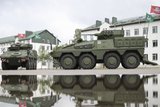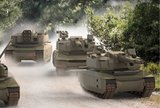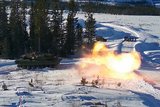US Army IBCTs need tactical mobility
In order to meet the goals of the US Army’s combat vehicle modernization strategy some changes will be taking place.
This is in order to ensure that the forces are agile and lethal enough to take on modern expeditionary operations, deploying at long distances into a nearby area and then move into offensive operations rapidly to take their objectives, potentially without air superiority and facing a range of anti-access capabilities from a well-equipped enemy.
Lt Col Scott Coulson, Maneuver Chief at the US Army’s Capabilities Integration Center (ARCIC) told the AUSA Global symposium that the Infantry Brigade Combat Teams (IBCTs)
Already have an account? Log in
Want to keep reading this article?
More from Land Warfare
-
![Hungary set to begin using Hero 400 loitering munitions]()
Hungary set to begin using Hero 400 loitering munitions
Developed by Israel's Uvision and with systems being sold in the thousands to multiple European NATO countries and the US, the Hero family of loitering systems is also in production in the US and Italy, the latter through Rheinmetall.
-
![Croatia orders Leopards and CAESAR howitzers as Lithuania orders more CAESARs]()
Croatia orders Leopards and CAESAR howitzers as Lithuania orders more CAESARs
The Leopard is becoming the tank of choice in central and eastern Europe as Croatia joins Lithuania, the Czech Republic and Hungary in ordering the platform. Lithuania and Croatia have also signed for CAESAR howitzers.
-
![Light Reconnaissance Strike – enabling a vital mission set (Studio)]()
Light Reconnaissance Strike – enabling a vital mission set (Studio)
A new system-of-systems concept will unlock digital integration of sensors and weapons for Light Forces, allowing them to shape the battlefield environment on their own terms and upgrade legacy platforms.
























